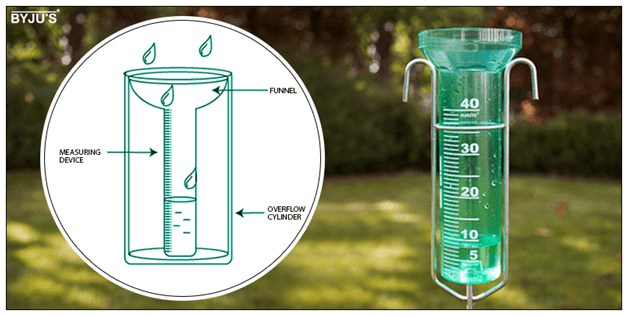The Benefits of Setting Up a Precision Rain Gauge for Your Weather Station
The Benefits of Setting Up a Precision Rain Gauge for Your Weather Station
Blog Article
Unveiling the Science Behind Rain Assesses: Just How These Gadgets Play an Important Duty in Climate Study and Environmental Tracking
Rainfall assesses, seemingly straightforward gadgets, hold an extensive importance in the realm of climate research and ecological tracking. As we peel off back the layers of this scientific veil surrounding rainfall gauges, we uncover a globe where precision, information accuracy, and precise monitoring merge to reveal a much deeper understanding of our transforming climate and its effect on the earth.
Significance of Rain Gauges
Rain assesses play a crucial duty in tracking and measuring precipitation levels, supplying essential information for climate research study and evaluation. These devices are basic in measuring the amount of rainfall that occurs in a specific location over a specific duration. By collecting and measuring rain, rain assesses offer important understandings right into the circulation and intensity of precipitation, aiding meteorologists, hydrologists, and climatologists in understanding weather condition patterns and fads.
Among the key reasons rainfall gauges are vital is their capability to provide precise and local information. Unlike satellite or radar-based measurements, which provide more comprehensive observations, rain gauges offer accurate information certain to the location where they are placed. This localized data is crucial for different applications, including flooding projecting, dry spell monitoring, and water resource administration. Additionally, long-lasting information accumulated from rainfall assesses helps in examining climate modification effects and patterns, adding substantially to scientific research and decision-making procedures. Essentially, rain assesses act as necessary tools in the area of meteorology and environmental scientific research, playing an essential role ahead of time our understanding of weather and environment dynamics.
Sorts Of Rain Scales

Capability and Procedure
In the realm of environment research study and meteorological research studies, the effectiveness of rainfall determines lies in their intricate functionality and precise functional systems. Rain gauges are designed to accurately gauge the amount of precipitation that tips over a particular area throughout a set duration. These tools commonly contain a funnel that accumulates rainwater and channels it right into a determining tube. The measuring tube is noted with calibrated home dimensions that enable for the accurate metrology of rainfall.
The functionality of rainfall determines is based upon the principle of accumulating and determining rainwater in a standardized manner. This collected information is essential for understanding regional weather condition patterns, tracking lasting environment patterns, and examining environmental influences. To guarantee exact dimensions, rain evaluates requirement to be tactically placed in open locations far from obstructions such as structures or trees that could interfere with the collection process.
The functional element of rain assesses entails regular maintenance to stop particles accumulation, calibration checks to keep dimension precision, and information tape-recording for analysis (rain gauge). Generally, the functionality and operation of rain determines are vital for collecting trustworthy precipitation data important to environment study and environmental surveillance
Role in Environment Research
Provided the crucial importance of exact rainfall measurements in recognizing weather patterns and environmental impacts, the duty of rain gauges in climate research study is try this website vital. Rainfall evaluates give necessary information for environment research study by evaluating the quantity of rainfall that drops over a certain area throughout a given period. This information is important for monitoring long-term fads in rainfall patterns, assessing the effect of climate modification on rainfall distribution, and enhancing climate designs.

Climate researchers utilize information accumulated from rain assesses to examine variants in rainfall levels, identify regional climate patterns, and review the efficiency of water resource monitoring techniques. By contrasting historical precipitation data with current measurements, researchers can detect changes in precipitation patterns, such as modifications in the frequency or intensity of rains occasions. This details is essential for recognizing how environment change is influencing precipitation characteristics and can help policymakers make educated choices pertaining to adaptation and mitigation methods.
Applications in Ecological Monitoring

In flooding projecting, rain gauge data assists to track rainfall strength and distribution, allowing authorities to provide prompt cautions and take needed measures to minimize flooding risks (rain gauge). Dry spell monitoring depends on rainfall scale information to analyze moisture levels in the dirt and track rainfall deficiencies, helping in the recognition of drought-prone locations and the implementation of dry spell response strategies
Additionally, rainfall scale data plays a vital duty in water source management by supplying info on water accessibility and use patterns. Furthermore, in agriculture, rain scale data helps farmers in optimizing watering routines, crop selection, and total farm monitoring practices based on neighborhood precipitation patterns.
Final Thought
In conclusion, rainfall assesses are vital tools for determining rainfall, providing useful data for climate study and ecological tracking. With different types and performances, rainfall evaluates play an important duty in understanding precipitation patterns and their influence on the atmosphere. By properly measuring rains, these gadgets add to right here the innovation of clinical understanding and assistance in making educated choices associated to water resource management and calamity readiness.
Rain evaluates play an essential role in surveillance and gauging precipitation levels, giving necessary data for climate research study and evaluation. The conventional rainfall gauge, understood as the "tipping bucket" scale, is one of the most frequently used gadgets. Ultrasonic rainfall gauges use noise waves to identify the visibility of rain, providing real-time data on precipitation levels.Climate researchers use information gathered from rainfall assesses to assess variations in rainfall degrees, determine regional climate fads, and evaluate the efficiency of water source monitoring methods.In verdict, rain evaluates are vital tools for determining precipitation, providing important data for climate research and environmental surveillance.
Report this page